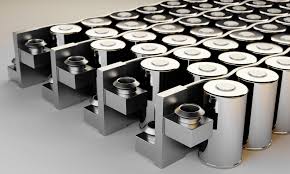fixing shower door seal
Fixing Shower Door Seal A Comprehensive Guide
If you’ve noticed water pooling on your bathroom floor after a shower, one of the likely culprits is a worn or damaged shower door seal. A proper seal prevents water from leaking out of your shower enclosure, keeping your bathroom dry and mold-free. In this article, we will explore the importance of a shower door seal, the signs of damage, and a step-by-step guide to fixing and replacing it.
Importance of a Shower Door Seal
A shower door seal plays a crucial role in maintaining the integrity of your bathroom. It acts as a barrier, preventing water from escaping the shower enclosure and causing potential damage to flooring, walls, and cabinetry. Besides protecting your home from moisture damage, a well-functioning seal also helps maintain the overall aesthetics of your bathroom by preventing unsightly stains and mold growth.
Signs of a Damaged Seal
Recognizing the signs of a damaged shower door seal is essential for prompt repairs. Here are some common indicators
1. Water Leaks If you frequently find puddles outside your shower door, this is a clear sign that your seal is compromised.
2. Visible Wear and Tear Check for cracks, tears, or gaps in the seal. Over time, materials may degrade due to exposure to water, heat, and soap.
3. Mold or Mildew If you notice any discoloration or a musty smell around the edges of your shower, it may be due to trapped moisture caused by a faulty seal.
4. Difficult Door Operation If your shower door sticks or is difficult to open or close, it could be due to a seal that isn’t functioning properly.
How to Fix and Replace a Shower Door Seal
If you’ve determined that the shower door seal needs attention, don’t worry; fixing or replacing it is a manageable DIY task. Follow these steps for a successful project.
Material Needed
- New shower door seal (make sure to buy one suitable for your door type) - Scissors or utility knife - Cleaning supplies (soap, sponge, and a cloth) - Measuring tape - Caulk (if necessary)
fixing shower door seal

Step 1 Remove the Old Seal
1. Inspect the Current Seal Examine how the old seal is attached to the shower door. Some seals may be glued while others simply slide into place.
2. Carefully Take Off the Seal If it's glued, use a utility knife to gently pry it away from the door. If it slides, simply pull it out. Be cautious not to damage the door.
Step 2 Clean the Area
Before installing the new seal, it’s crucial to clean the area thoroughly. Use soap and water to remove any grime, soap scum, or adhesive residues. Dry the surface with a clean cloth to ensure a proper bond with the new seal.
Step 3 Measure and Cut the New Seal
Using a measuring tape, determine the length needed for the new seal. Cut it to the appropriate length using scissors or a utility knife. Make sure to make straight cuts for a neat fit.
Step 4 Install the New Seal
1. Position the Seal Align the new seal where the old one was located. If it slides into a groove, simply push it in; if it’s adhesive-backed, peel off the backing and press it firmly into place.
2. Ensure a Tight Fit Check for any gaps. If necessary, you can use a little caulk around the edges for an additional watertight seal.
Step 5 Test It Out
Once you have installed the new shower door seal, test the door's functionality. Close and open it a few times to ensure smooth operation. Afterward, run the shower and observe for any leaks.
Conclusion
Fixing a shower door seal is a straightforward task that can save you from costly water damage and keep your bathroom looking pristine. By recognizing the signs of a damaged seal and promptly addressing the issue, you can maintain the functionality of your shower and enhance your bathroom’s overall appeal. So grab your tools and get started—your dry floor will thank you!
Share
-
The Best Lubricants for Aluminum Roller GuidesNewsJul.23,2025
-
Slitting Machine Applications in the Packaging IndustryNewsJul.23,2025
-
Rolling Roller Balancing Techniques for Smooth OperationNewsJul.23,2025
-
How To Optimize An EV Battery Assembly LineNewsJul.23,2025
-
Energy Efficiency in Modern Battery Formation EquipmentNewsJul.23,2025
-
Automation Trends in Pouch Cell Assembly EquipmentNewsJul.23,2025







